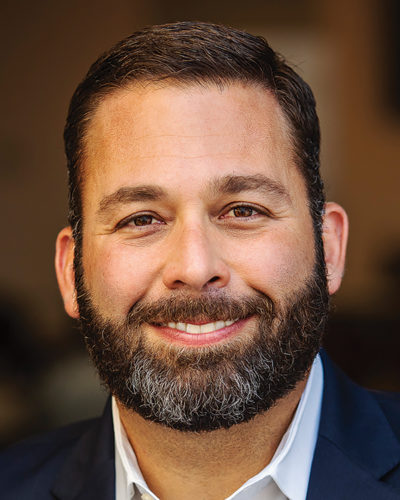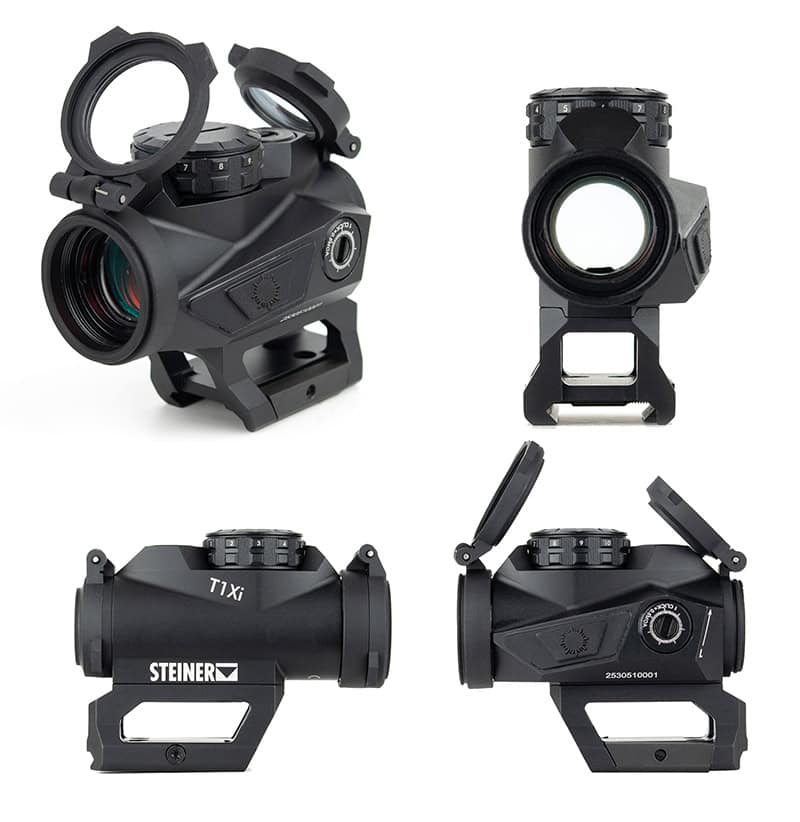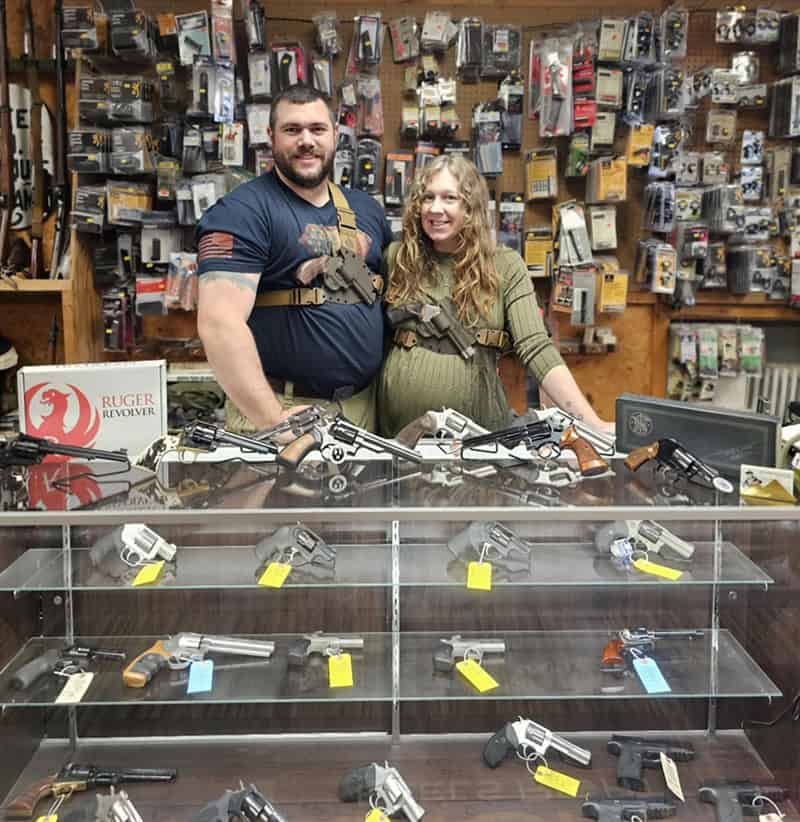It’s Possible: Paid Digital
Marketing Campaigns
It should come as no surprise the digital marketing sector has continued to experience rapid growth. In 2021, the total U.S. digital advertising spend grew by 21.6% year-over-year to total $436.3 billion — $77.4 billion more than the annual spend in 2020.1 Comparatively, offline media spending grew by 7.6% over 2020 to total $196 billion. This means more than half of all advertising was digital (55%). Of this, Facebook accounted for over a quarter of all digital ad spending, right behind Google (28.9%) and surpassing Amazon (10.3%).
This year, digital advertising expenditures are projected to increase by 5.5% to $460 billion.2 So how are ranges and retailers supposed to compete when Big Tech’s advertising and community guidelines explicitly prohibit ads for firearms and nearly all firearms-related products?
According to its ad policy, Google wants to “help keep people safe both online and off, so we don’t allow the promotion of some products or services that cause damage, harm, or injury.”
With the exception of “gun parts and associated items that increase the safety of a gun” such as gun locks, trigger locks, safety pins and chamber blocks, Google prohibits the promotion of explosives (including fireworks), guns, gun parts and related products, and other weapons (including knives, tasers, pepper spray, etc.). The other members of the Big Five (Apple, Microsoft, Meta and Amazon) each have similar language in their policies.
Reduce Your Risk
“If trying to run their ad campaigns through Big AdTech platforms like Google and Facebook, the best thing firearm ranges and retailers can do is to try to soften their ad creative and run very vague ‘brand’ campaigns,” said Ashley Hineline, director of customer success at Topple — a venture-backed digital advertising exchange connecting advertisers with millions of customers across America every single day.
“Their odds of approval increase if their ads don’t contain an image of a firearm and if they don’t reference guns or shooting sports specifically,” she added.
Of course, there’s only so much a range or retailer can do to “soften their ad creative” and businesses have to decide whether the potential return is worth the effort — or whether they want to contribute to the profits of platforms that actively work to censor their entire industry, regardless of whatever the return on investment may be.
Alternative Ad Exchange
“While it’s still possible to find success advertising across major ad platforms, especially Google Search Engine Marketing if ranges and retailers can manage to get their campaign approved and launched, ranges and retailers should strongly consider running geo-targeted campaigns on firearms-friendly ad exchanges like Topple,” said Brian Aitken, founder and CEO of Topple.
“They won’t have to self-censor their ad creative, their costs will likely be much less expensive and they can run many ad formats they’re already accustomed to like display, video and native ads. They’ll also enjoy many of the same targeting opportunities like geography and interests, including the ability to target those who have indicated an interest in firearms.”
Topple allows brands to advertise anything legal, from guns to ammunition or crypto to cannabis. Their guidelines are simple — if it’s legal in the jurisdiction it’s being advertised, and the publishers in their exchange have opted-in to receive ads from your industry, then those ads will be served to your target audience.
“To get the sales, you need to build awareness, loyalty and credibility — which can all be done without paid search or social media campaigns.”
Jeff Dillow, Account Director, TREAD Agency
“As far as I know, Topple is the only ad exchange built on the principles of both free speech and freedom of association. Meaning, brands have a right to say whatever they want in their ads — which the Supreme Court has held is constitutionally protected speech,” said Aitken. “But, publishers also have the right to say they don’t want to associate themselves with certain industries. So far, over 96% of publishers across our exchange have chosen to allow ads from the firearms industry.”
Topple does this by working with a wide range of publishers from Blaze Media to AR15.com that run ads often alongside ads from other demand partners like Google.
Google even partners with ad exchanges that appear to operate using a different set of guidelines than its Google Ads Policy, which only applies to its own network and properties such as YouTube. Although they continue to boast about how not accepting gun ads is a reflection of the company’s values and culture, they continue to receive a slice of revenue from firearms companies that advertise through their partner networks. In fact, using such a loophole allowed the company to publicly claim it has a no-gun policy while facilitating the placement of — and earning money from — more than 100 million gun ads each year.3
Maintain Your Organic Presence
Many ranges and retailers, especially small- to mid-size businesses with very limited resources, grow so frustrated with all the digital media red tape they consider abandoning it as part of their marketing strategy altogether. But with an estimated 5.6 billion Google searches each day and 3.84 billion monthly active users across Meta’s family of apps (Facebook, Instagram, Messenger and WhatsApp), having a digital presence isn’t optional for those seeking to attract new customers and reach key growth demographics like women and minorities.
“You can still have a robust organic presence as long as you aren’t directly selling,” said Jeff Dillow, account director of TREAD Agency, which primarily provides digital marketing services for shooting sports, fishing, boating, overland, off-road and other outdoor-market segments.
“For every $1 spent on a pay-per-click advertising campaign, such as through Google or Facebook, the average return on investment is $2. But email marketing returns $36 for every $1 spent.”
For those questioning why they should invest time into social media and digital marketing if they can’t overtly sell their products or services, Dillow had this to say: “To get the sales, you need to build awareness, loyalty and credibility — which can all be done without paid search or social media campaigns.”
Use First-Party Data
With an increased focus on consumer privacy and data protection, digital marketing is growing more complex than ever.
Businesses must not only comply with legislative policies such as the California Consumer Privacy Act, but also keep up with the ever-changing platform policies like Google’s forthcoming end of third-party cookie tracking and Apple’s new Mail Privacy Protection.
“What we’re seeing is a tidal change in how digital marketing works,” said Dan Kahn, president of TREAD Agency. “First-party data is more important than ever.”
First-party data is information a company collects directly from its customers and owns, such as email addresses, mailing addresses and phone numbers.
“Up until now, we’ve seen brands pour massive amounts of resources into building these huge presences, but they’ve done so on platforms they don’t own or control which can be taken away in the blink of an eye,” he continued. “We’ve seen it happen time and time again, especially for those whose businesses fall under restricted ad categories like the firearms industry.”
“Rather than put all their eggs in one basket, ranges and retailers should diversify their marketing efforts.”
Rather than put all their eggs in one basket, ranges and retailers should diversify their marketing efforts and prioritize those that allow them to maintain more control over first-party data. Doing so can yield far greater return.
Case in point: For every $1 spent on a pay-per-click advertising campaign, such as through Google or Facebook, the average return on investment is $2.4 Email marketing, however, returns $36 for every $1 spent.5
Other tried-and-true digital marketing tactics utilizing platforms or data you own and control include search engine optimization and SMS (text message) marketing. Compared to emails, text messages actually tend to be more effective. They have a 98% open rate compared to 20% in emails.6 Statistics show SMS marketing also yields a higher click-through rate compared to email and Facebook marketing.
Working Together
Lastly, the most important thing those in the firearms industry can do to combat the censorship being carried out by Big Tech is work together.
“One of the most alarming trends I’m hearing about is ranges and retailers reporting competitors in their area on social media or leaving negative reviews,” said Kahn. “They know from firsthand experience how easy it is to have an entire account shutdown over a single, small violation, and they’re using it to hurt their competitors. But the reality is they’re negatively impacting the entire industry. As an industry, we’re under attack and we have to band
together.”
Footnotes:
1. marketingcharts.com/advertising-trends/spending-and-spenders-224702
2. prnewswire.com/news-releases/digital-marketing-market-to-be-valued-at-460-billion-by-2022-says-beroe-inc-301497636.html
3. propublica.org/article/google-guns-ads-firearms-alphabet-advertising
4. smallbizgenius.net/by-the-numbers/ppc-stats
5. constantcontact.com/blog/email-marketing-statistics
6. smscomparison.com/mass-text-messaging/2022-statistics
For more info:
wearetopple.com
treadagency.com










